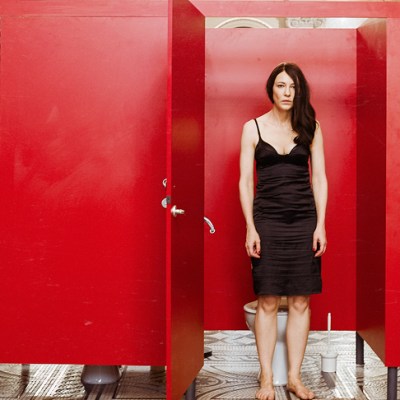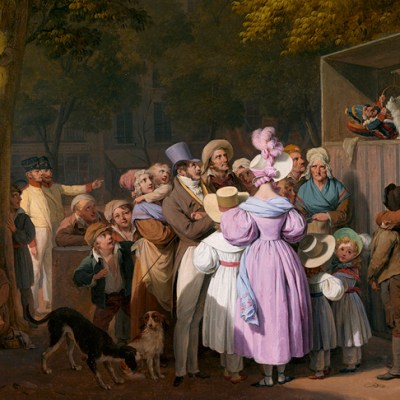The cream of the art and antiques world once again gathers in the MECC in Maastricht for TEFAF (16–24 March); this year, some 300 dealers from 20 countries bringing a total of around 35,000 objects spanning seven millennia. While the event is divided into its usual eight sections – Ancient Art, Antiques, Design, Houte Joaillerie, Modern, Paintings, Paper, and Tribal – the Modern section for 2019 has been swelled by 13 new exhibitors, out of 28 newcomers to the fair overall. Below, and in two further instalments this week, Susan Moore selects her highlights of the fair.
Young Lady with a Pink Ribbon (1784), Alexander Roslin
Åmells, £148,000
Roslin’s European clientele reads like a roll call from the Almanach de Gotha, but it was Paris where the Swedish painter chose to spend most of his extremely successful professional life. A master of shimmering silks and satin skin, he also succeeded in conveying a real sense of character. In this late portrait there is something touchingly shy and sincere about this unknown sitter.
Young Lady with a Pink Ribbon (1784), Alexander Roslin. Åmells, £148,000
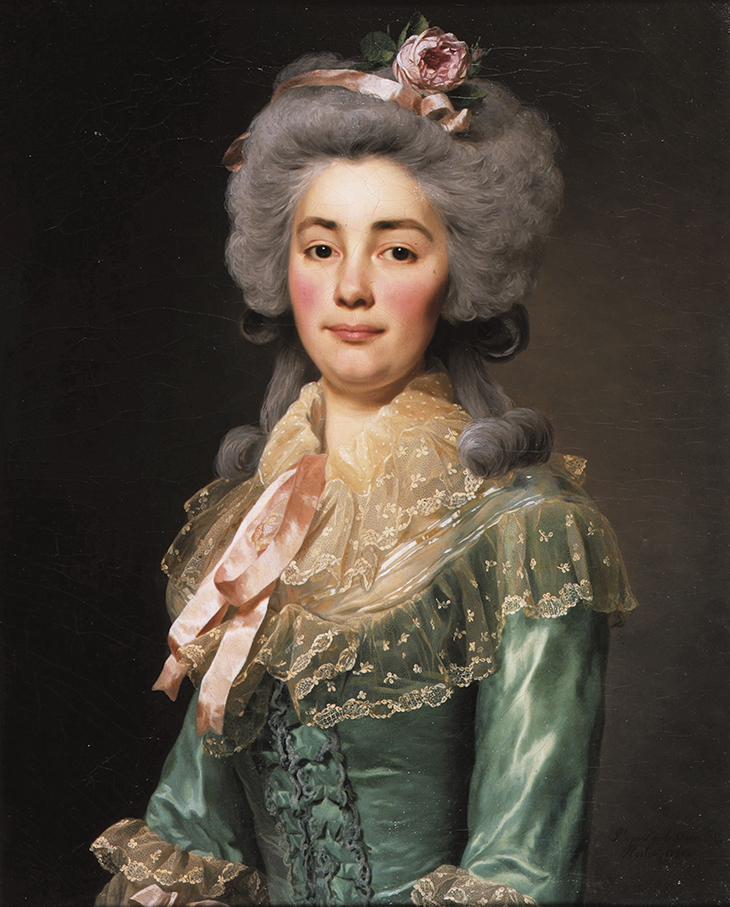
Nautilus cup (c. 1670), Netherlands
Kunstkammer Georg Laue, €460,000
Exotic natural wonders such as nautilus shells from the Indo-Pacific were sufficiently highly valued in Europe from the Renaissance period onwards to be deemed worthy of further embellishment. This specimen was etched with scrolling flowers, birds and sea monsters in Amsterdam around 1650, the design ingeniously exploiting the shell’s three layers. It was subsequently lavishly mounted, with a winged siren for the support, for the Swedish royal family.
Nautilus cup (c. 1670), Netherlands. Kunstkammer Georg Laue, €460,000
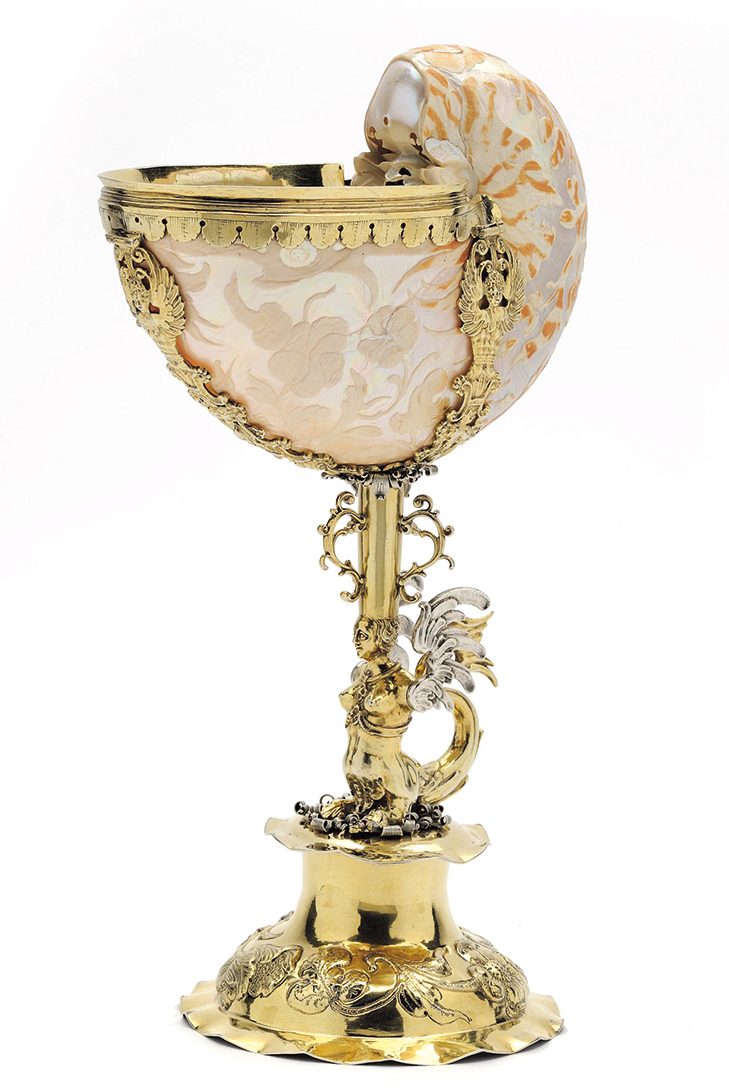
À un dîner d’athées (At a dinner of atheists) (c. 1879–85), Félicien Rops
Le Claire Kunst, €120,000
‘Rops am I, virtuous am I not, hypocrite I do not deign,’ announced the Belgian artist whose work gave visual expression to the late 19th-century Decadent and Symbolist movements. This much-exhibited work was one of a series of drawings published in an 1886 edition of Jules-Amédée Barbey d’Aurevilly’s infamous collection of short stories, Les Diaboliques. This is the artist’s first drawing for a scene in a story in which a French officer relates an unusual tale of lust, depravity and self-loathing. Although it features the prerequisite broken-down door, burning candle, corpse and the provocatively exposed body of a beautiful woman, the drawing is less an illustration than a suggestive evocation that gives free rein to the viewer’s imagination. While the character Rosalba represents the age-old misogynistic notion of woman as an incarnation of evil, her pose here, echoing a Christ on the Cross, might suggest that she also deserves our pity.
À un dîner d’athées (At a dinner of atheists) (c. 1879–85), Félicien Rops. Le Claire Kunst, €120,000
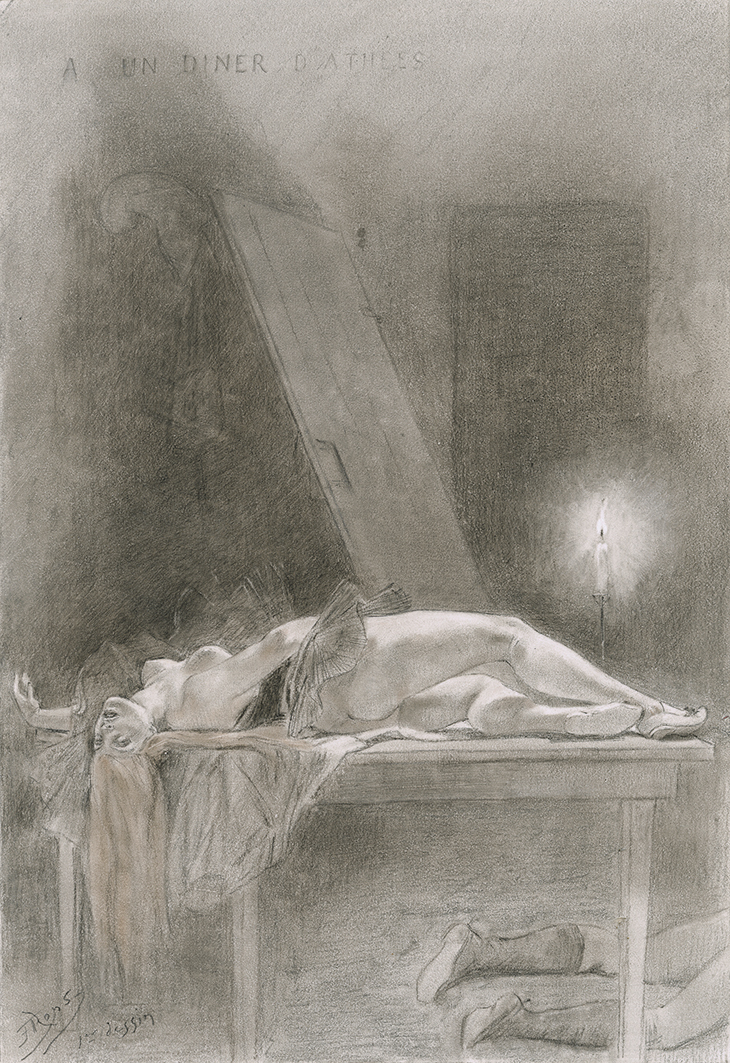
Amida Buddha (11th–12th century), Japan
Gregg Baker Asian Art, €1.2m
An inscription inside this large sculpture – recently rediscovered in Japan – describes it as a ‘seated figure made by Eshin’, restored by the order of the previous abbot of the Nansho-in temple in 1729. Eshin Sozu, also known as Genshin (942–1017), remains an influential monk and philosopher who promoted a doctrine of devotion to the celestial Amida Buddha, and whose writings on rebirth and salvation through faith stressed the importance of visualising this buddha. Here, Amida’s gestures welcome the believer into his heavenly Pure Land. Among the buddha’s distinguishing features are the extended cranial lobe, needed to accommodate his great understanding of the truth, and large ears allowing him to hear all people in need. This later Heian period saw a flowering of a national art independent of China. Other images attributed to Eshin are housed in temples in Kyoto and Kanagawa, while a comparable sculpture belongs to the Tokyo National Museum.
Amida Buddha (11th–12th century), Japan. Gregg Baker Asian Art, €1.2m
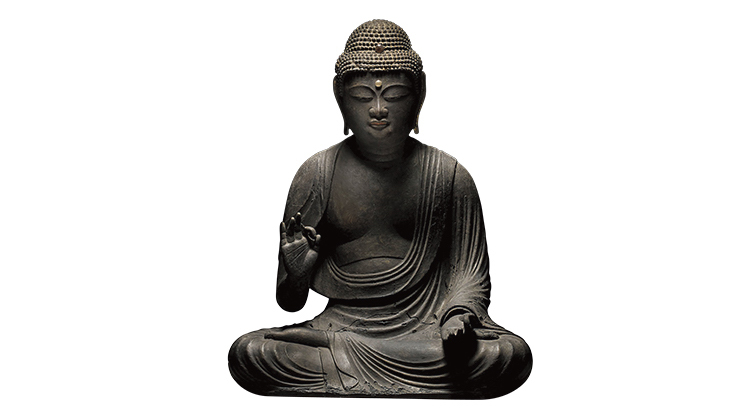
At the Lakeside, Moonlight (c. 1872), John Atkinson Grimshaw
Maas Gallery, €210,000
Whistler once said that he thought he had invented nocturnes until he saw Grimshaw’s moonlit scenes. This is one of the self-taught Yorkshire artist’s earliest and most poetical and mysterious, an evocation of Waterloo Lake in Roundhay Park, Leeds. Probably painted soon after the city corporation acquired the estate as a public resource in 1872, it is an expression of local civic pride wrought in the language of German Romanticism.
At the Lakeside, Moonlight (c. 1872), John Atkinson Grimshaw. Maas Gallery, €210,000
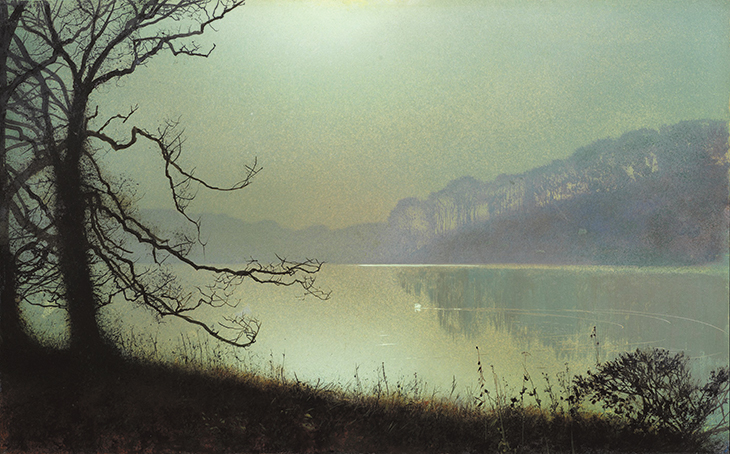
Camillus (2nd–3rd century AD), Roman, with 16th-century restorations and additions
Colnaghi, price on application
In the collection of the Dukes of Alcalá in Seville since the 16th century, this figure is an attendant of the Goddess Flora and the two are offered as a pair. Both reflect the imperial Roman taste for flamboyantly figured and coloured semi-precious hardstones and the Renaissance passion for ‘completing’ damaged ancient statuary. The youth’s head is modelled on the 1st-century bronze statue of Camillus in Rome’s Capitoline Museums.
Camillus (2nd–3rd century AD), Roman, with 16th-century restorations and additions.
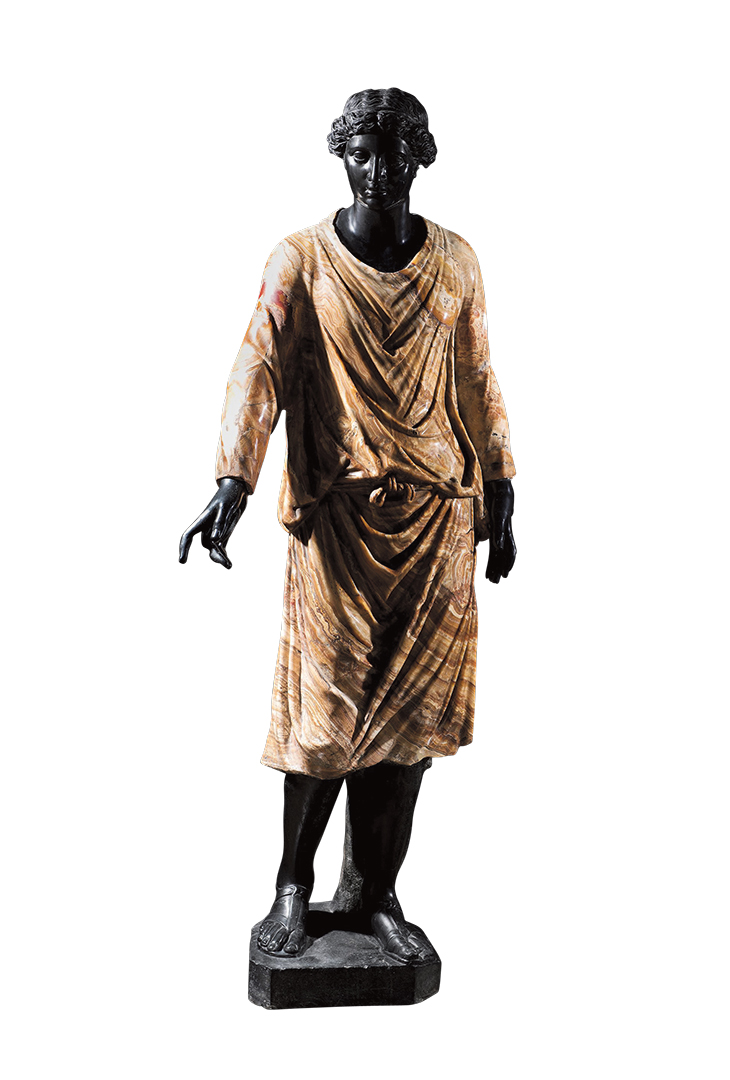
TEFAF Maastricht is at the Maastricht Exhibition and Congress Centre (MECC) from 16–24 March.
From the March 2019 issue of Apollo. Preview and subscribe here.

